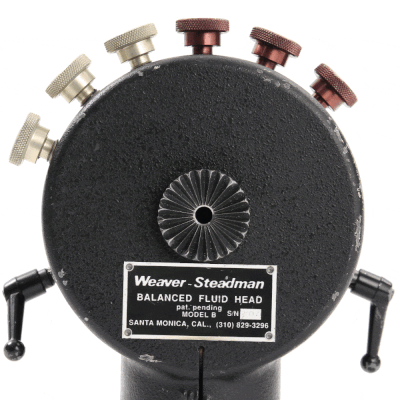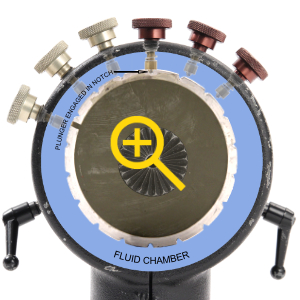HOW TO: Fluid tension adjustment


SUMMARY: Knobs are all the way in or all the way out. Here's why...
Knurled plunger knobs on the Pan, Tilt and 3rd Axis Modules control drag. Each knob controls an individual disc of fixed resistance. When a knob is screwed all the way into the module, a spring loaded pin comes in contact with the edge of a disc. As the module is rotated you will feel a click when the pin becomes seated in a slot on the disc. This stops the disk from rotating in the fluid housing and increases resistance.
How much drag/tension do you need? The knob closest to the edge of the casting engages the disc with the lightest drag (Usually sufficient for most situations). Very little drag is required to smoothly control the camera when balanced properly. In fact, less drag is more desirable for making smooth starts and stops.
How to do it: To engage a plunger, screw clockwise all the way in, snug but not over tightened. Screwing a knob down harder will not result in more drag. Think of it as ON or OFF. To disengage a knob, make sure it is backed out counter-clockwise all the way (not too tight) to clear the disc. Partially engaged or disengaged knobs will not affect dampening, but will diminish smoothness and impair continuity of movement.
